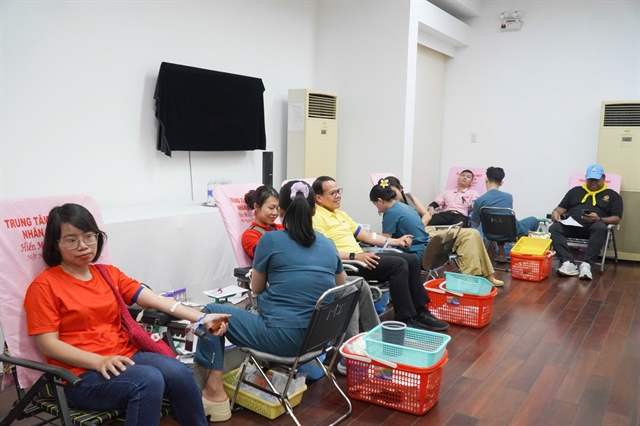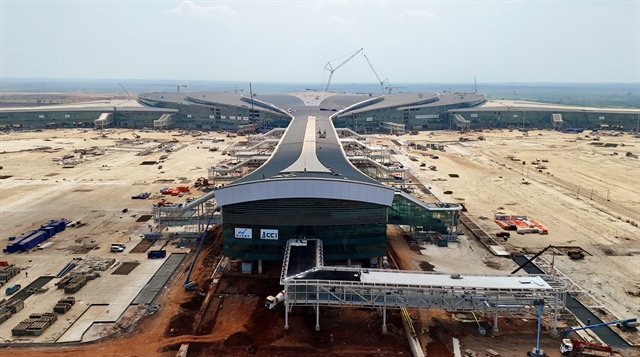.jpg) Economy
Economy

The banking sector has implemented monetary policies and management solutions in 2021 to control inflation and stabilise the macro-economy. At the same time, it also provided credit support for people and businesses to gradually restore production. In 2022, the banking sector will continue to create favourable conditions for liquidity in the economy.
Deputy Governor of the State Bank Đào Minh Tú speaks to the Vietnam News Agency about these issues.

|
| Deputy Governor of the State Bank Đào Minh Tú |
The banking sector has implemented monetary policies and management solutions in 2021 to control inflation and stabilise the macro-economy. At the same time, it also provided credit support for people and businesses to gradually restore production.
In 2022, the banking sector will continue to create favourable conditions for liquidity in the economy.
Deputy Governor of the State Bank Đào Minh Tú speaks to the Vietnam News Agency about these issues.
How will the banking sector continue supporting people and businesses in overcoming difficulties caused by the COVID-19 pandemic in 2022?
The unpredictable development of the pandemic with the appearance of the Omicron mutation makes the global economic outlook and inflation in 2022 difficult to forecast, posing difficulties and challenges for Việt Nam's banking sector.
Therefore, the State Bank in 2022 will continue to carry out monetary policies in a flexible manner, creating favourable conditions in supporting liquidity in the economy.
The bank will also be proactive and flexible in coordinating with other macro-economic policies to control inflation at the target of 4 per cent for this year, contributing to macro-economic stability and supporting economic recovery.
We will continue to stabilise the exchange rate, as well as manage the foreign exchange and gold market well.
For credit activities, the State Bank will continue to focus capital for businesses in prioritised fields, especially for enterprises facing difficulties due to COVID-19.
The credit organisation system also creates favourable conditions in exploiting all resources in the economy. The credit institutions implement the Government's preferential credit programmes. The credit growth is targeted at 14 per cent for this year.
In 2021, we set a credit growth target of 12 per cent. However, we had a policy of loosening credit at the end of the year to ensure capital for businesses, especially in restoring the economy and creating favourable conditions for firms that are in urgent need of capital. Therefore, the credit growth reached about 13.5-14 per cent in 2021.
The 14-per-cent figure is the target for 2022, but it can also be higher or lower, depending on the capital needs of the economy as well as inflation control requirements. Especially at year-end, this credit growth target will be adjusted to suit the actual situation.
How will the State Bank of Việt Nam control credit flow into potentially risky sectors in 2022?
With the directions of the Prime Minister, the State Bank continues to create favourable conditions for concentrating credit in priority areas. That will help those areas overcome difficulties and recover.
In 2021, the bank will implement many solutions to control loan size and improve credit quality.
Credit continues to focus on sectors that are the driving forces for economic growth such as production, and areas heavily affected by COVID-19. Besides that, the Bank will strictly control credit for potential risk areas.
With the State Bank's solutions, the whole economy's credit in 2021 was higher than the same period in 2020 despite having impacts from the COVID-19 pandemic.
In 2021, the total outstanding debt of the economy reached about VNĐ10.38 quadrillion, up 12.97 per cent compared to the end of 2020. Four out of five priority sectors had growth rates higher than the overall credit growth of the economy.
Entering 2022, with risky sectors such as real estate, securities, and corporate bonds, the State Bank will strengthen control for them.
Especially, according to experts, there may be a phenomenon of cash flow into securities and real estate in the future. The bank will strengthen supervision on the securities and real estate markets to ensure healthy development of those markets.
In addition, credit will be tightened for speculative activities and large projects of the property industry. However, the State Bank still encourages credit for people having real needs in real estate.
For the securities sector, if the market develops in a healthy manner, capital will still be facilitated. But the bank will strictly control capital if the market shows signs of speculation. It may also conduct inspections on corporate bonds.
The pandemic is one of the reasons why bad debt tended to increase in the past year. What will the State Bank do to help commercial banks reduce pressure and handle bad debts in 2022?
The pandemic, lasting for the past two years, has brought many consequences to the economy, including slow capital turnover, interrupted cash flow, a decline in corporate revenue and inability to pay due debts. These difficulties will have a stronger impact on banking operations in 2022.
It is true that bad debt will increase. According to the State Bank's calculations, the bad debt ratio is about 7.31 per cent at present, including debts due to the impact of the COVID-19 that are at risk of turning into bad debts. So, it is difficult to achieve the goal of maintaining the bad debt ratio at a safe level of below 3 per cent, directly affecting the asset quality and financial capacity of credit institutions.
Therefore, 2022 is a year of great challenges for the banking sector. It has solutions to cope with the challenges, first of all being to ensure financial safety for credit institutions.
To deal with old bad debts, its scheme on restructuring credit institutions in association with solving bad debt has also brought good results. If there was no pandemic, it would have successfully completed the set targets, such as the handling of bad debts. However, the pandemic has made bad debts increase rapidly.
The State Bank has determined the scale of bad debt in 2022 and the coming years to come up with solutions to both control the existing bad debts and not let new bad debts arise.
At the same time, it will strengthen inspection and supervision of activities of credit institutions, especially loans for sectors with high risks.
The State Bank also submitted to the Government and the National Assembly to consider building the Law on Bad Debt Settlement based on Resolution 42/2017/QH14 piloting the bad debt settlement of credit institutions. This is a positive solution for the settlement of bad debts in the future due to impacts from COVID-19.
After a period of implementation of Resolution 42, a very large amount of debt has been solved. If there were no pandemic, Resolution 42 would have helped the banking sector to resolve the previous bad debts.
However, in the context of many difficulties and bad debts, the Law on Bad Debt Settlement will create favourable conditions for the banking sector as well as other financial institutions and authorities in settlement of bad debts in a better way. VNS



.jpg)
